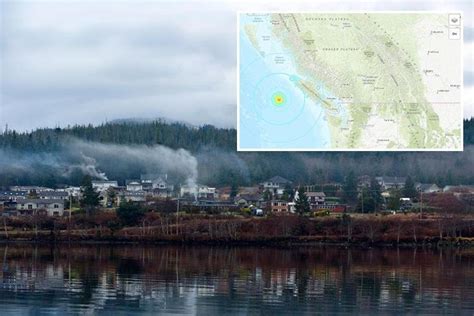Vancouver Island Feels Sechelt Earthquake: A Recipe for Disaster Preparedness
The recent earthquake near Sechelt, British Columbia, served as a stark reminder of the seismic activity along the west coast of Canada. While the earthquake itself wasn't catastrophic, its impact on Vancouver Island highlighted the importance of earthquake preparedness. This isn't a recipe for baking a cake; it's a recipe for protecting yourself and your family in the event of an earthquake.
Understanding the Risk
Vancouver Island, like much of British Columbia, lies within a seismically active zone. The Cascadia Subduction Zone, a major fault line, poses a significant threat of a large-magnitude earthquake. Understanding the potential risks is the first ingredient in your disaster preparedness recipe.
Ingredients for Your Earthquake Preparedness Plan:
-
An Emergency Kit: This is the most crucial ingredient. Your kit should include:
- Water: One gallon per person per day for at least three days.
- Food: Non-perishable items, enough for three days. Consider easy-to-prepare options.
- First-aid kit: Include essential medications, bandages, antiseptic wipes, and pain relievers.
- Flashlight and extra batteries: Essential for navigating darkness after a power outage.
- Radio (battery-powered): Stay informed about emergency updates.
- Whistle: To signal for help if needed.
- Dust mask: To filter contaminated air.
- Moist towelettes, garbage bags, and plastic ties: For personal sanitation.
- Manual can opener: For easy access to canned food.
- Local maps: In case GPS and cell service are down.
-
A Communication Plan: Knowing how to contact family members and emergency services is vital. Establish a meeting point in case you are separated. Include emergency contact information in your kit.
-
Securing Your Home: Identify potential hazards in your home that could cause injury during an earthquake, like heavy objects that could fall. Secure shelves, bookcases, and hanging objects.
-
Emergency Contacts: Keep a list of emergency contacts readily available, including family, friends, and local emergency services.
-
Financial Preparations: Consider having some cash on hand in case ATMs are inaccessible. It’s also wise to make copies of important documents and store them securely.
Instructions for Implementing Your Plan:
- Create your emergency kit: Gather all the necessary supplies and store them in an easily accessible location.
- Develop your communication plan: Discuss your plan with your family and ensure everyone understands the meeting point and contact information.
- Secure your home: Take the necessary steps to secure potential hazards.
- Practice your plan: Conduct regular drills with your family to ensure everyone knows what to do in case of an earthquake.
- Stay Informed: Regularly check for updates on earthquake preparedness from reliable sources like the BC government website.
The Aftershocks: Post-Earthquake Actions
Following an earthquake, remember to:
- Check for injuries: Provide first aid if needed.
- Check your home for damage: Be cautious of aftershocks.
- Listen to the radio for updates: Follow instructions from emergency services.
- Avoid damaged areas: Stay clear of hazardous areas.
Remember, this "recipe" is not foolproof, but it significantly increases your chances of surviving and coping with the aftermath of an earthquake. Being prepared is your best defense against the unpredictable forces of nature. Preparing for an earthquake isn’t about fear; it’s about taking control and protecting what matters most. Stay safe.
